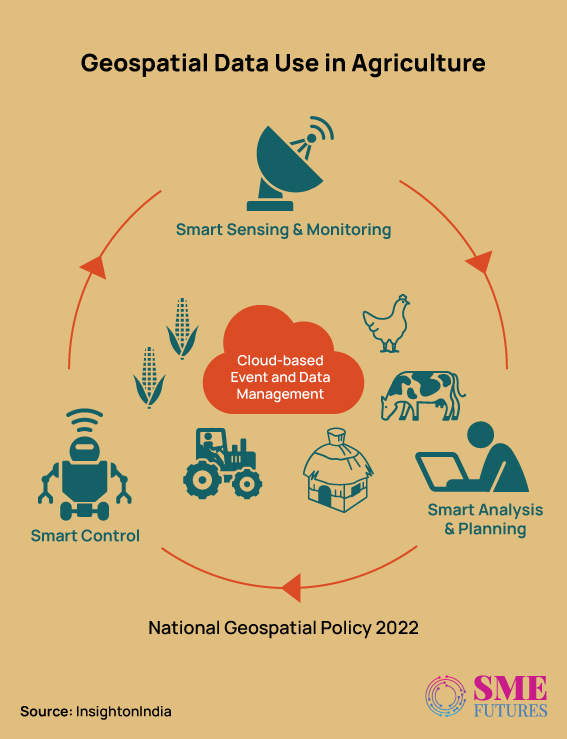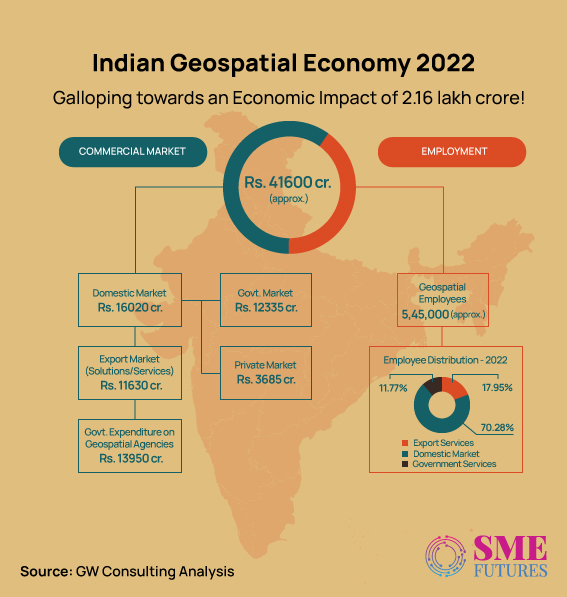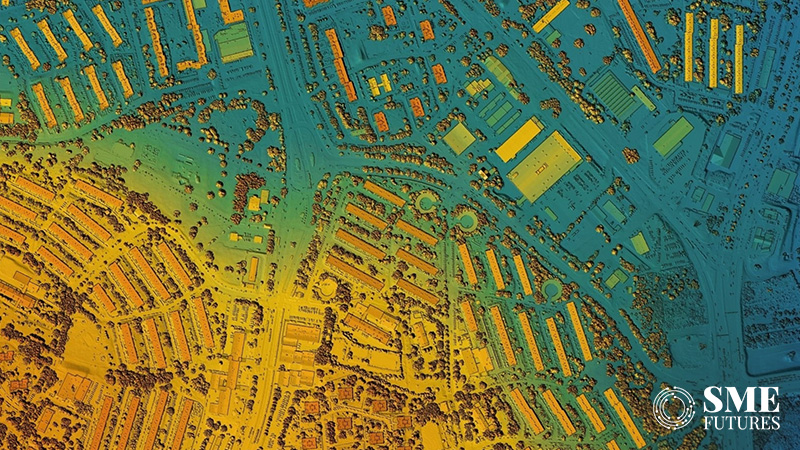The announcement of the National Geospatial Policy (NGP) 2022 in December last year is a significant milestone for India’s digital transformation, incentivising innovation, industry, and infrastructure. The Policy encourages the use of location “as a common and underpinning reference frame” across sectors. It recognises the wide-ranging function and applications of geospatial technologies in nearly every sphere of the economy, laying out a clear blueprint for the industry’s overall development.
Significance of the National Geospatial Policy for the geospatial industry

The NGP 2022 is a much-awaited vision document that lays down an overarching framework for the holistic development of the geospatial ecosystem. Its core objective is to make India a world leader in the global geospatial space.
“The Policy encourages not just the capture and processing of nationwide high-resolution geospatial data but also digital twins and the use of state-of-the-art drone/aircraft/land-vehicle/satellite-borne sensors like LiDAR and SAR for survey and mapping activities,” says Pramod Kaushik, President of the Association of Geospatial Industries and Managing Director of Hexagon India.
The Policy aims to enable the easy availability of the valuable geospatial data collected utilising public funds to businesses and to the public. It also strives to have a thriving geospatial industry in the country involving private enterprise.
Key objectives of the National Geospatial Policy
The NGP 2022 sets the vision and goals for the geospatial sector for the next 13 years, along with the strategies to accomplish them. The core of the Integrated Geospatial Information Infrastructure will be the cooperation and collaboration among its various stakeholders, the Policy highlights.
Also Read: Spike in counterfeit notes, people’s choice may have contributed to withdrawal of Rs 2,000 notes
“The key objectives of the National Geospatial Policy are to make India a world leader in the global geospatial space with the best-in-class ecosystem for innovation, to develop a coherent national framework in the country and leverage it to move towards a digital economy and improve the services that are being provided to the citizens of this country, to enable the easy availability of the valuable geospatial data collected utilising public funds to businesses and to the public, and to have a thriving geospatial industry in the country involving private enterprise,” says Kaushik.
“The Policy places a lot of emphasis on innovation and reiterates that the private sector will be a key catalyst for change. Setting the framework for India’s “geo-data driven” growth, it outlines methods for bolstering the geospatial infrastructure through new data sets, mapping infrastructure, and geospatial technology,” says Ashwani Rawat, Co-Founder & Director, Transerve Technologies.

The Policy’s milestones are progressive in nature, starting from foundational frameworks and data accessibility and availability to data quality and capacity growth and high-end data infrastructure. This ensures that the Policy’s targets and timelines are well thought out and implementable.
Provisions related to data sharing, data privacy, and security

There are no explicit provisions pertaining to data privacy and security in the policy document. Data sharing and management, however, have been catered to. One of the most pressing concerns raised by the Association of Geospatial Industries and industry representatives before the government has been the need for the availability, easy access, and high quality of the foundational data in the country.
“The Policy will support open platforms, open data, and open standards. It will encourage the design and acceptance of best practice standards and compliance methods. The standards related to the national, fundamental and sectoral geospatial data themes will be developed and promulgated after consultations with both the suppliers and the users,” Kaushik points out.
The Policy encourages the development of a geospatial data infrastructure building on the current data holdings and the ICT infrastructure. This will enable the efficient collection and management of geospatial data/information and ensure the availability of the quality data and the ease of access that is set to be provided by the Policy. “This will lead to an increased level of interest from investors and start-ups that will see this as an opportunity to develop new products and services that leverage geospatial technology. The Policy will act as a catalyst for innovation and entrepreneurship in the geospatial industry,” Kaushik elaborates.
The NGP 2022 also recognises the importance of capacity building and skilling initiatives in driving innovation and entrepreneurship in the industry. The Policy emphasises the need for a coordinated approach to capacity building, which involves collaboration between industry, academia, and government. “The Policy aims to foster a culture of continuous learning and development through targeted capacity building programmes for students, professionals, and researchers in the geospatial field,” he points out.
To facilitate research and development in the geospatial industry, the Policy encourages the establishment of research and development centres and innovation labs. It emphasises the importance of long-term contract research and development initiatives, which will enable companies to undertake research and development activities that require significant resources and time. The Policy also encourages the establishment of geospatial technology parks, which will provide a platform for collaborations between industry, academia, and the government in the geospatial field.
The bottom line

The National Geospatial Policy 2022 is a vital milestone in India’s geospatial journey. The Policy provides a comprehensive framework for the development of the geospatial ecosystem in the country. It recognises the importance of geospatial technology in enabling digital transformation and economic growth in the country. It provides clear objectives, targets, and timelines for the development of the geospatial sector in the country. The Policy is also designed to encourage innovation and entrepreneurship in the industry, promote capacity building and skilling initiatives, and facilitate research and development in the geospatial field.
“With increased access to geospatial data, small and medium businesses can avail themselves of a plethora of benefits like providing tailored services and geolocation-based ads to attract and retain more customers with location intelligence,” says Rajat Jain, Co-founder of Pataa.
“The availability of high-accuracy geospatial data can enable businesses to utilise location-based data to craft custom customer acquisition and retention strategies to boost business. This will impact employment as the sector grows, and the number of people required to build custom technological solutions will also go up,” he adds.
Also Read: Parenting app BabyG aids new parents in taking better care of their kids
The Policy is expected to have far-reaching implications for the geospatial industry in India. It will provide a level playing field for all the stakeholders, encourage the development of new products and services, and drive economic growth in the country. With the implementation of this Policy, India is expected to become a world leader in the geospatial space, with the best-in-class ecosystem for innovation.
“It is vital in today’s date to incorporate technology into business operations to help reduce the intervention of manual input and to automate workflows. Businesses should ensure the optimal utilisation of geospatial data to enhance their operations and to reduce their costs. This move can help businesses to better understand their target geographic audiences, come up with better user acquisition strategies and custom tailor their offerings according to the different requirements of the different location types of their customers,” says Jain.











